Wandering in dementia refers to the compulsive need to move and roam. It’s a significant concern for caregivers because of the associated dangers; individuals who wander can put themselves at risk.
Wandering behaviors are a direct result of changes in the brain as the disease progresses, though wandering can occur at any stage of dementia.
We have discussed the topic in previous articles, exploring the reasons behind wandering and sharing some general tips on preventing it.
In this piece, we’ll take a slightly different approach. We want to offer dementia wandering solutions, sharing specific advice on how to alter the home environment to help those with dementia stay safe.
Even small changes in the home can improve security and independence for the person experiencing memory loss.
We’ll then also share how the purposeful design of Bridges® communities puts this advice into practice, creating warm, welcoming, and safe spaces for residents who can no longer stay in their home environments.
Practical Steps to Making the Home Safe
We spoke with the Vice President of Operations and Memory Care at Bridges®, Alicia Seaver, for some practical tips that people can apply at home.

Alicia Seaver
VP of Operations and Memory Care at Bridges®
As part of Alicia’s role here at Bridges®, she leads educational sessions for caregivers on topics such as wandering.
With over 30 years in memory care, including having a hand in designing our Bridges® at Hingham community, Alicia knows a thing or two about the importance the environment plays in preventing wandering. Or, as she would term it, ensuring safe, purposeful wandering.
That’s because Alicia stresses that burning off energy is critically important.
“Giving those with dementia enough opportunity to exercise is vital for many reasons. With reference to wandering in particular, we know that activities and exercise reduce anxiety, restlessness, and agitation – key triggers for wandering.”
With this framing in mind, we shouldn’t see wandering as a negative symptom. Instead, view safe and purposeful wandering as a potentially positive way to get that much-needed exercise.
In other words, we want to encourage the physical act of walking, but we want the person experiencing memory loss to walk in a way that doesn’t put them in danger or heighten agitation.
This is sometimes easier said than done, and there’s no blanket solution here.
Nevertheless, here are a few tips to help reduce the risk of agitated, troublesome wandering in the home.
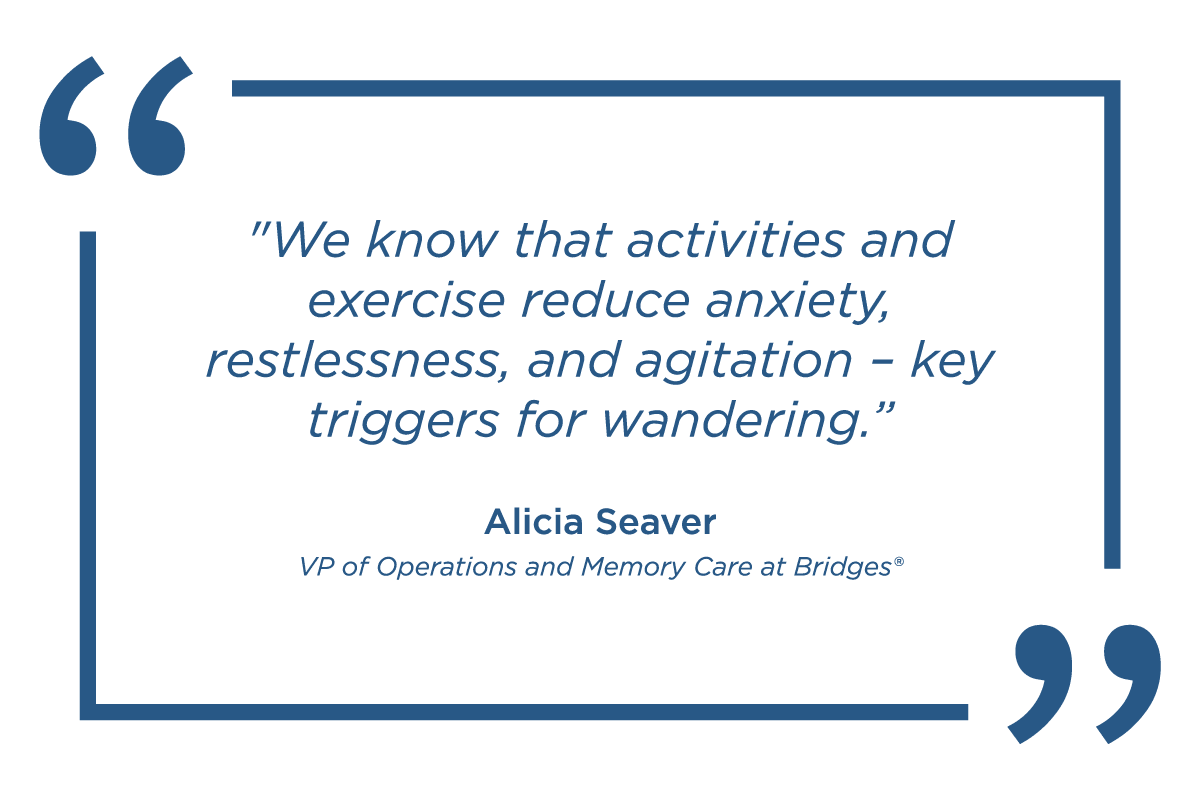
Restricting Access
This first set of tips is all about restricting access to potentially harmful areas or redirecting attention away from exit points.
Moving the Locks
If possible, move the locks away from the line of vision.
Alicia: “With people suffering from dementia, out of sight is often out of mind. So, if there are doors to rooms or outside spaces you don’t want to be accessible, try moving the locks to either the top or bottom of the door.”
This simple shift makes the locks much less noticeable to the individual with dementia. By positioning locks higher or lower than eye level, you remove the visual cue that triggers their impulse to open the door.
Confronted with a door that is much harder to open, many people suffering memory loss will simply move away.
Please note, it’s never okay to forcefully confine or ‘lock in’ an individual with dementia.
Camouflage Doors
Staying within this category of exit modification, another way to deter attempted openings is to camouflage doors.
Alicia: “Making your door much less noticeable in the first place is always a useful deterrent. People can do this in different ways. You’ll see people painting a door the same color as the surrounding walls. This makes the door blend in.
An alternative would be to use wallpaper on the door to disguise its function. For example, I’ve seen people apply wallpaper to make the door look like a bookshelf, since many of those with dementia are disinclined to go and pick up a book to read.
A floor-to-ceiling curtain is another option to disguise the door.”
As with moving the locks, these modifications simply make it more difficult for a person with dementia to notice or use the door as an exit point.
With these design choices, you blend the door into the surrounding environment. This camouflage helps individuals with dementia resist natural stimulation to use the door.
STOP Signs
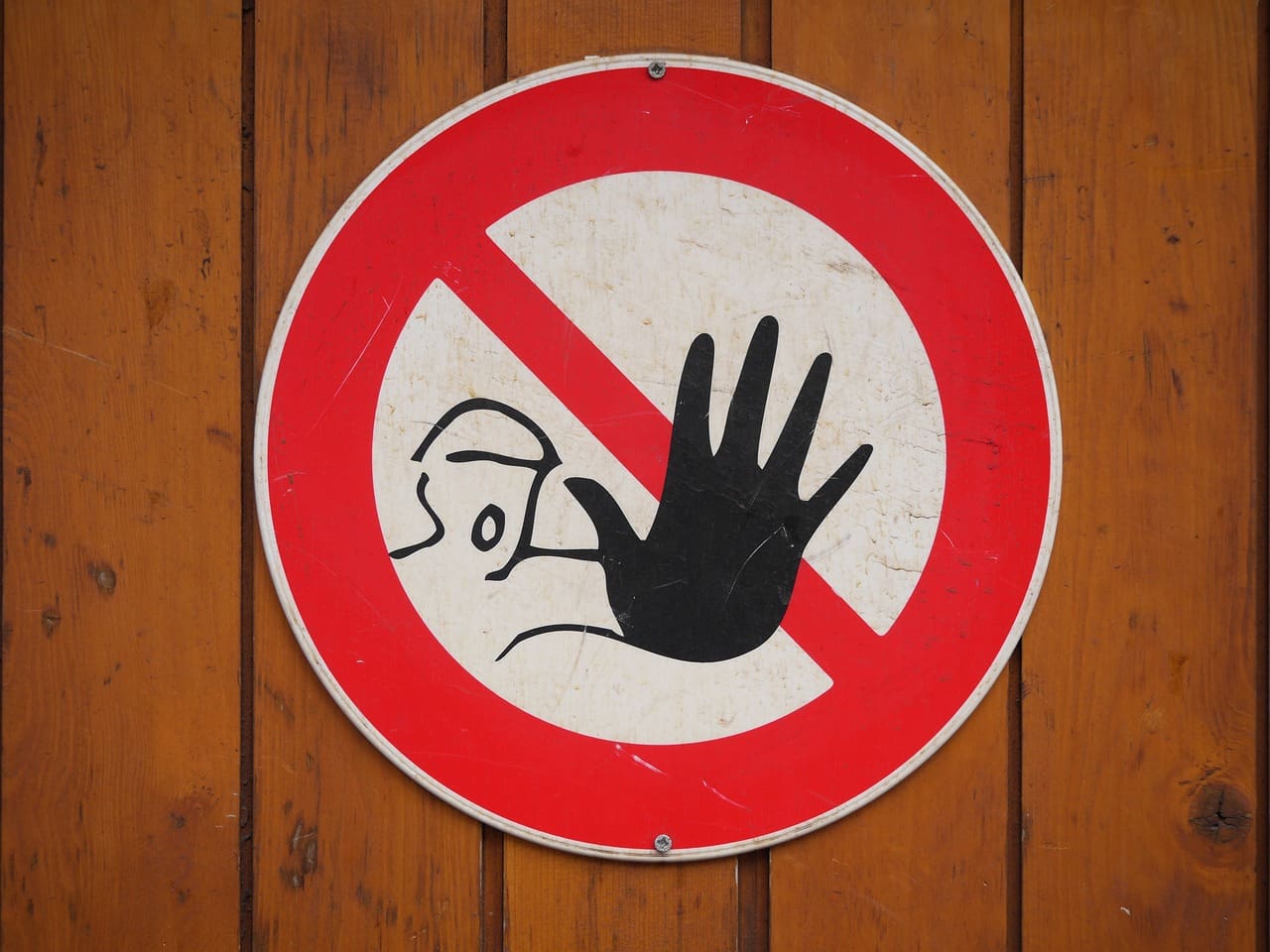
A final way to modify doors would be to affix a sign to warn against opening.
Alicia: “I’ve seen a lot of success with a simple STOP sign or a warning sign. For many experiencing memory loss, short-term memory suffers while long-term memory remains intact.
In their state of confusion, the prohibitive effect of something like a STOP sign on a door is ingrained.
The meaning of the sign is clear. Seeing this warning symbol is often enough for a person with dementia to understand the ‘rules’ associated with it. It makes them turn away and refrain from trying to exit.”
Printing off a simple, red-colored warning or stop sign and attaching it to specific doors can be enough to prevent unwanted exits.
Lock Away Harmful Substances
Cleaning products in brightly colored bottles might look like beverages to someone with dementia.
One caregiver told Alicia how their father nearly drank from a bottle of liquid detergent before they started storing all chemicals in a locked cabinet.
Simple locks on kitchen cabinets can prevent potentially dangerous mix-ups.
Encouraging Safer Exploration
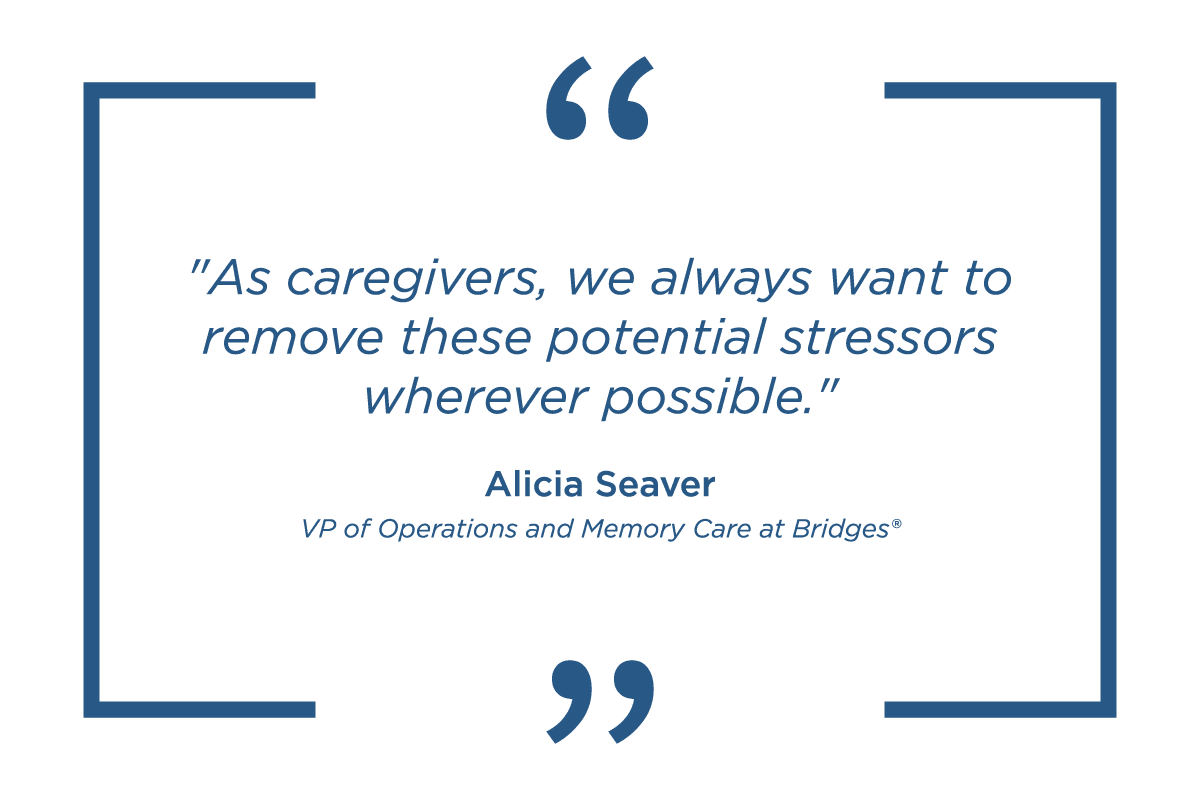
The above tips are about preventing dangerous mishaps – a significant aspect of keeping loved ones safe. We want to restrict access and deter potentially risky behaviors.
However, altering a home should also be about facilitating safe exploration, too.
We don’t want a situation where somebody with dementia is restricted in a way that makes them feel confined. We want them to exercise. We want the stimulation of purposeful wandering.
Not only that, but our understandable desire to keep them neatly boxed in smaller, ‘safer’ zones will only lead to further agitation and distress for them.
They are not prisoners. As Alicia reminds us: “We need to find ways to retain their personhood.”
So, let’s explore some tips to encourage safe exploration at home.
Establish Clear, Safe Pathways
Picture a living room filled with area rugs and stacks of books. There are fragile, decorative items scattered on side tables, and delicate pots on the floor.
While it may feel homey, a cluttered room can be a minefield.
Alicia: “These obstacles can be significant fall risks for someone with dementia. They may have trouble with depth perception and even hallucinations. These troubling symptoms make navigating these objects challenging, even distressing.
As caregivers, we always want to remove these potential stressors wherever possible.
Removing clutter and securing loose rugs makes for a much smoother and safer walking path.”
Ensure Consistent Lighting
Consistent lighting is another thing we can try to maintain in the household.
Shadows and sudden changes in lighting can be confusing or even frightening to somebody experiencing memory loss. Once again, those with depth perception issues can get agitated by lighting that exacerbates this issue of disorientation.
Warm, even lighting in the evening can also reduce sundowning behaviors, since fading light can be a trigger.
For nighttime wandering, consider installing some motion-sensor nightlights. These are a great solution for guiding safer nighttime movement if wandering in the night is an issue.
Provide Safe and Enclosed Outside Space
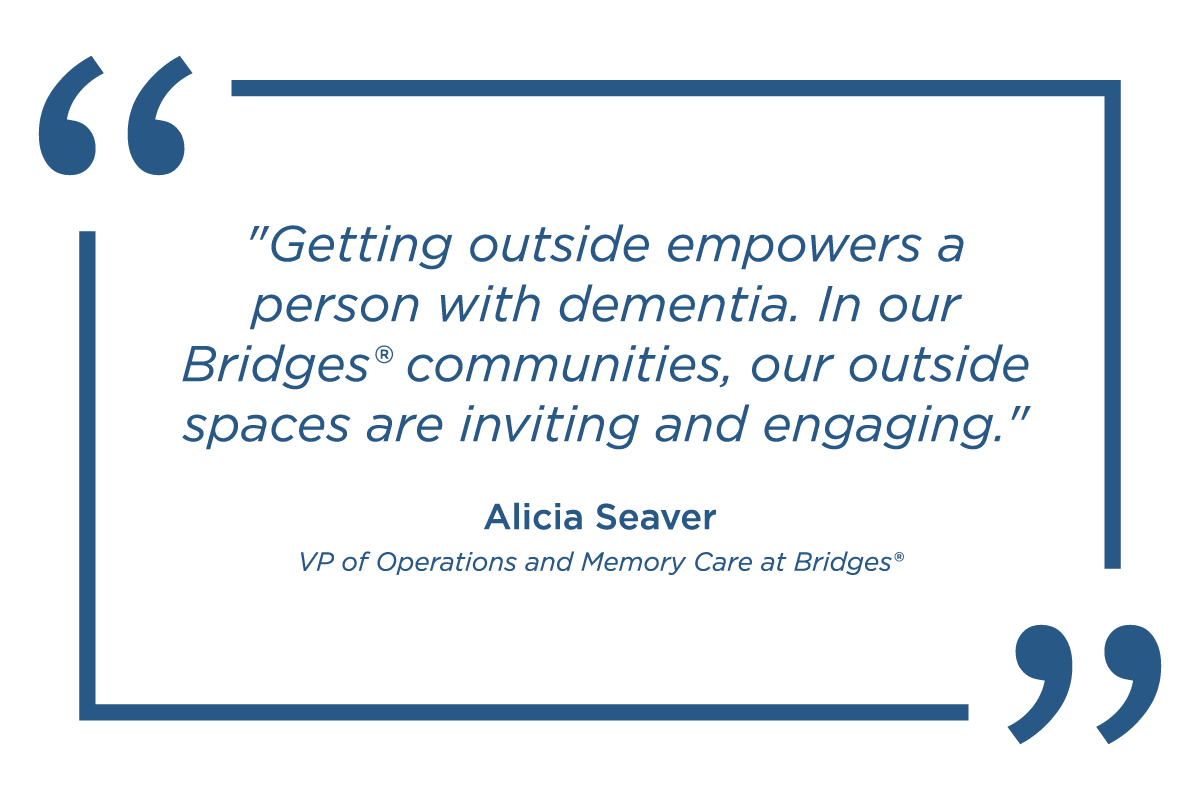
Time spent outside is a must for all of us. Connecting with nature and getting regular fresh air and sunlight is integral to our well-being.
Alicia: “Getting outside empowers a person with dementia. In our Bridges® communities, our outside spaces are inviting and engaging.
In spring, there are blossoming flowers to catch the eye. We have intelligently placed objects like bird feeders and sundials along walking paths. These serve to distract and give purpose to the wandering.
Exploring this safe and secure garden area works wonders for the mood, too, as being outside guards against depression.
Where possible, try to establish a safe, outside space for managed wandering. This outside access gives them a chance to get the sunlight and exercise they need, enjoying the restorative quality of a stroll in the garden.”
Alicia even shared one example of going the extra mile in one of our communities.
“We understood that many residents were familiar with the act of getting the bus. So, we erected two bus stops in our courtyard area, complete with signs and shelter.
As with our bird feeders and our raised flowerbeds and vegetable gardens, this gave residents a purpose for their wandering.
Just as they would go to check out the plants, they would happily wait for a non-existent bus – an act that soothed them as a connection to their lives before dementia.”
Even though it may be challenging to recreate something like a bus stop in a home environment, the notion behind the idea remains relevant.
If there is a safe outside space to explore, try to make it enjoyable. Install objects or distractions to engage the individual with dementia. The point is to provide a purpose for the wandering:
- Watering plants
- Feeding the birds
- Sitting on a bench or chair to people watch
- Admiring flowerbeds
- Checking a sundial/barometer/temperature gauge
Once again, performing these simple tasks outside is another great way to retain an element of personhood that empowers the individual with dementia.
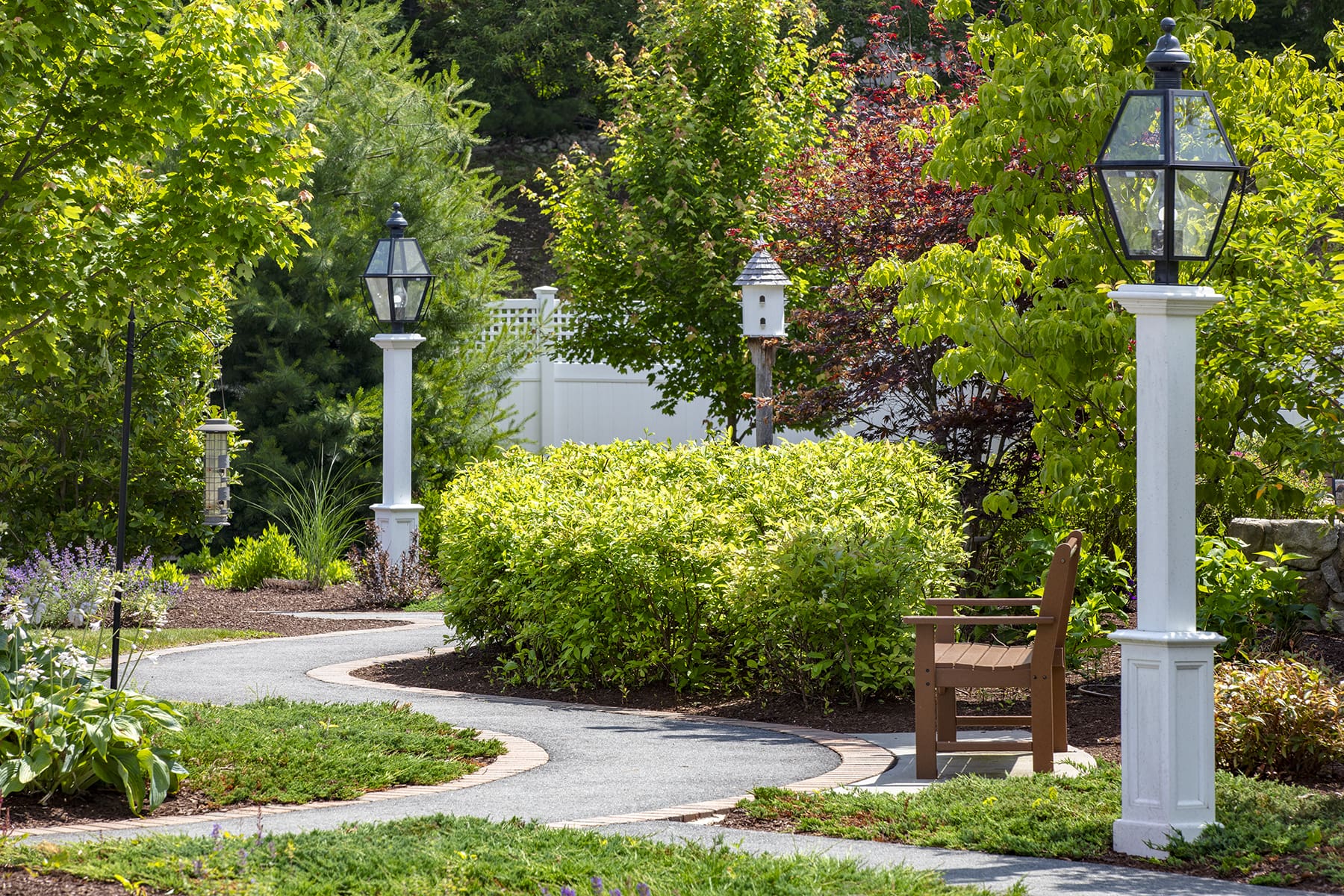
Create an Indoor Walking Path
Consider trying to create a safe walking path inside. This way, instead of trying to constantly redirect a loved one who wants to move, and frustrating them in the process, you can guide them to wander in a way that avoids danger.
A long hallway or a circular layout through the rooms of a home can give them a safe way to satisfy their need to move.
Adding things like handrails at convenient places can help facilitate an easy walking route if mobility is an issue.
Adding a small table with familiar objects (like a family photo or a favorite book) at certain points can provide comfort and reassurance, too.
Prepare for the Worst: Community Awareness
Even with these changes to a home, Alicia reminds us that challenging wandering is still likely to happen. We can only do so much to predict and prevent an episode, and problematic wandering can occur out of the blue at any stage of dementia.
Preparing for this possibility in advance can make all the difference in keeping a loved one safe. So, what can we do?
- Inform neighbors and local businesses – Having people nearby who recognize the person with dementia can help ensure their safe return. Speak with neighbors and even local shop owners. Provide them with a recent photo and contact information so they can act in an emergency.
- Let the police know – Many police departments keep records of individuals at risk for wandering. Letting the local authorities know about a loved one’s condition can help first responders act quickly and responsibly in a missing person emergency.
- Sign up for alert programs – Programs such as the Alzheimer’s Association’s MedicAlert® + Safe Return® can help find individuals with dementia who wander.

Finally, another note from Alicia, reminding caregivers of the challenge they face every day and of the need for self-compassion.
“Dementia care is an ever-changing endeavor. What works one day may not work the next. I hate to say it, but what works in the morning may not even work in the evening.
The nature of the disease means it affects everybody around the person experiencing memory loss.
The never-ending adaptations to new symptoms and challenging behaviors are painful for a caregiver. And of course, communication challenges add a whole extra element of difficulty.
So, be kind to yourselves.
Adapting to the situation in front of you can be draining, and it’s okay to feel frustrated or overwhelmed. Problematic wandering is only one of many challenging symptoms you have to negotiate.
So, give yourself grace as you navigate this journey. Feel free to explore our monthly caregiver support groups, when we come together in a collaborative space to share advice and tips.”
How Bridges® by EPOCH Provides Dementia Wandering Solutions
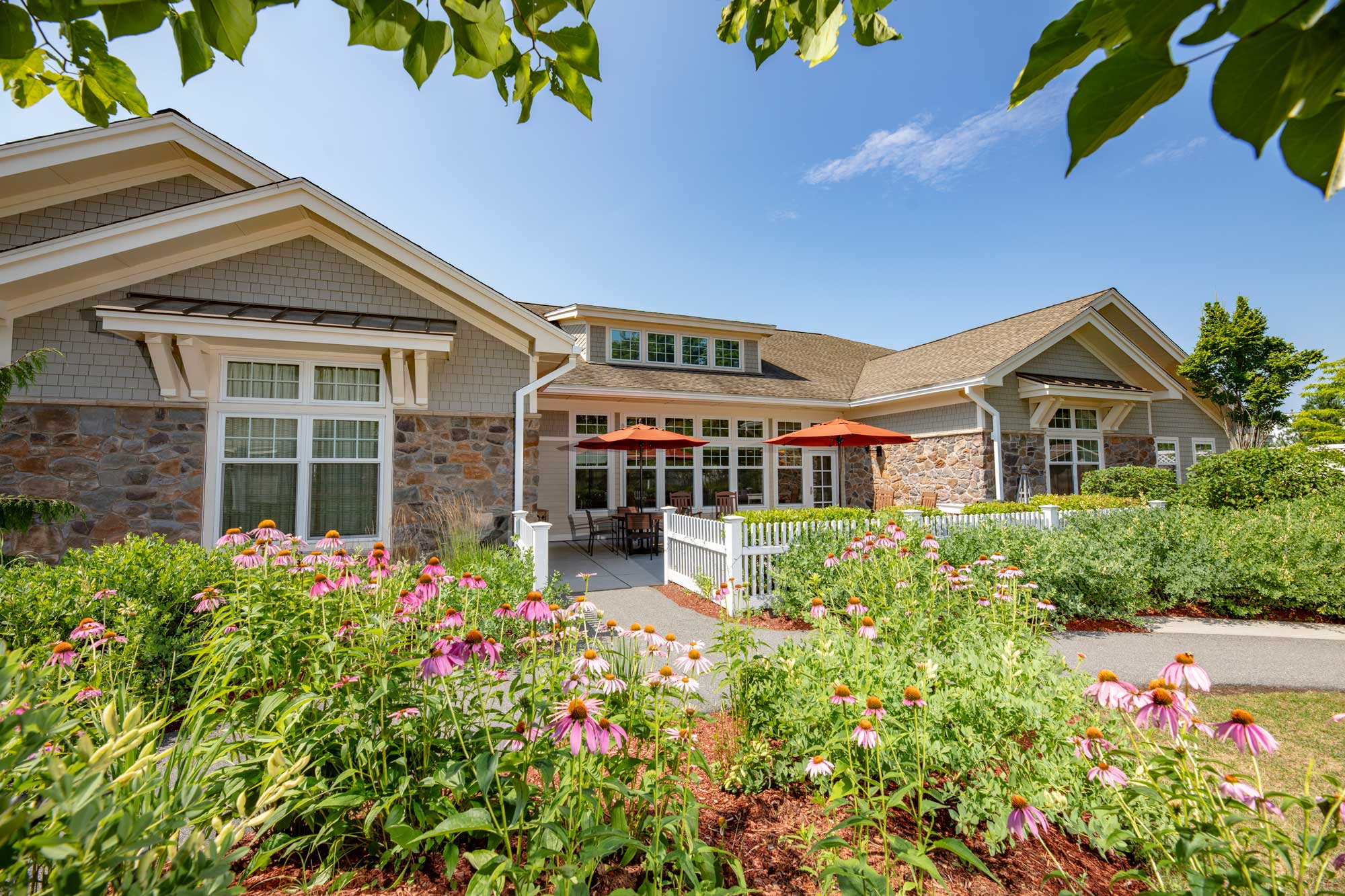
There may come a time to consider an alternate environment for a loved one. Perhaps the home is no longer safe, or the individual needs extra, specialized care.
At Bridges® by EPOCH, we recognize that individuals with Alzheimer’s Disease and other forms of dementia need a safe environment that also facilitates independence and personhood.
Our purposefully designed communities create a home environment for residents while minimizing the risks associated with wandering.
Each residential household is secure yet welcoming. We call them neighborhoods. Each space offers plenty of natural light, soft color palettes, clear directional cues, and individual rooms that open straight into the community space.
These thoughtfully chosen design elements help reduce confusion and provide a sense of calm. More than anything, though, they resemble a home rather than a facility.
As Alicia mentioned, outdoor exploration is critical to well-being. This is why our communities all feature fully enclosed courtyards where residents can safely enjoy fresh air under the supervision of our compassionate, dementia-care-trained team.
To supplement this calming space, our engaging, seven-day-a-week activity calendar keeps residents mentally and physically active. These activities help to reduce the restlessness and excess energy that might otherwise lead to wandering.
At Bridges® by EPOCH, families can have peace of mind, knowing their loved ones are in a secure, nurturing environment where their dignity and well-being are always the top priority.
Final Thoughts
Creating a safe and dementia-friendly home is essential for minimizing wandering risks.
Simple, thoughtful modifications can make a meaningful difference. The aim is not to restrict movement. Instead, we need to guide wandering urges into safer, less agitated channels.
Yet, home adaptations may not be enough to provide the level of safety and care needed as dementia progresses.
If you’re concerned about a loved one’s well-being, specialized memory care communities, such as Bridges® by EPOCH, may be the best option.
All of our communities are Purple Flag™ accredited, many of which were rated Best [in] Memory Care by U.S. News in 2024. Our communities were particularly commended for their care services, activity and enrichment programs, and for the fact they feel like home.
We invite you to reach out or schedule a visit at the community nearest you to learn more.

